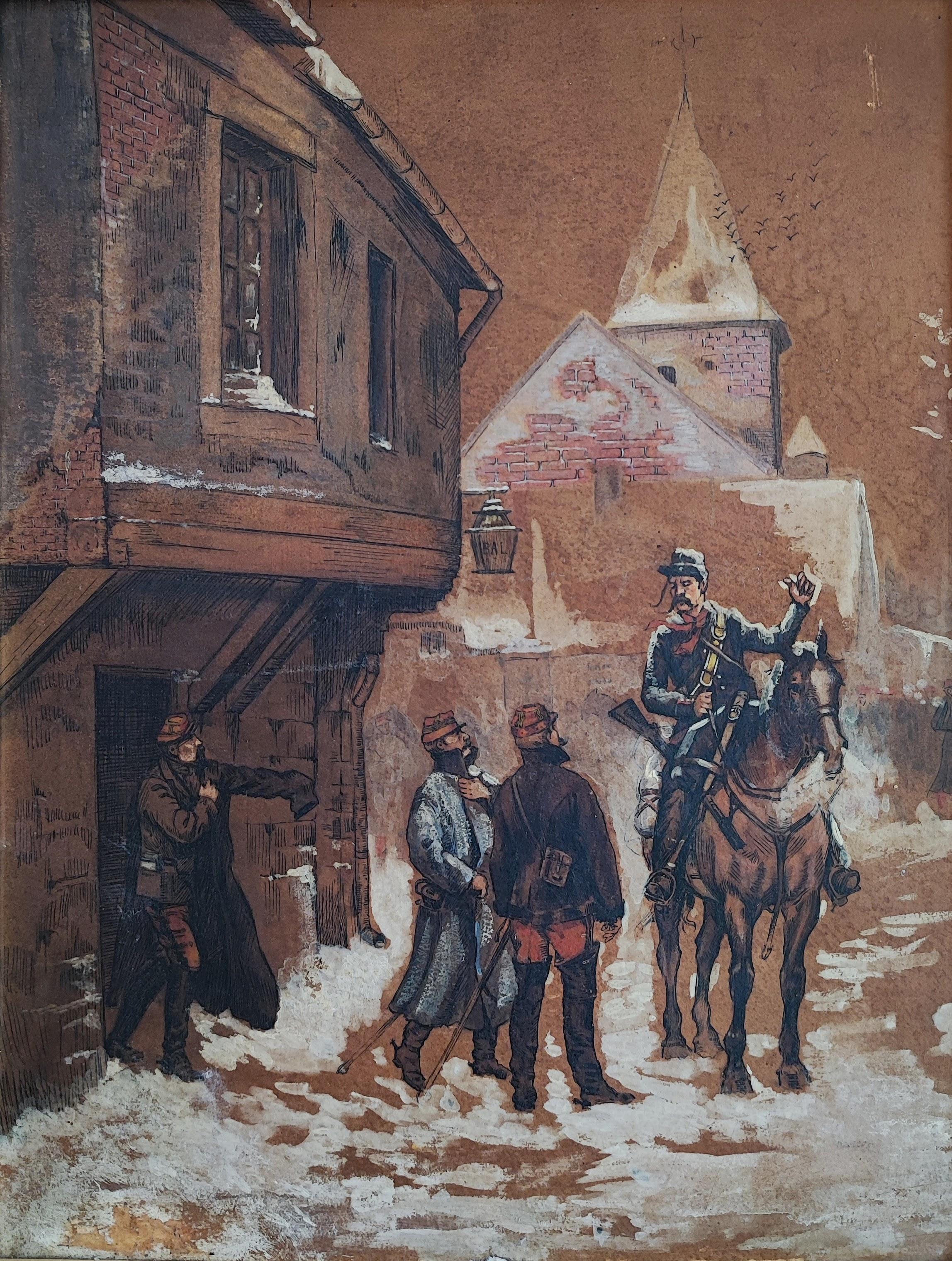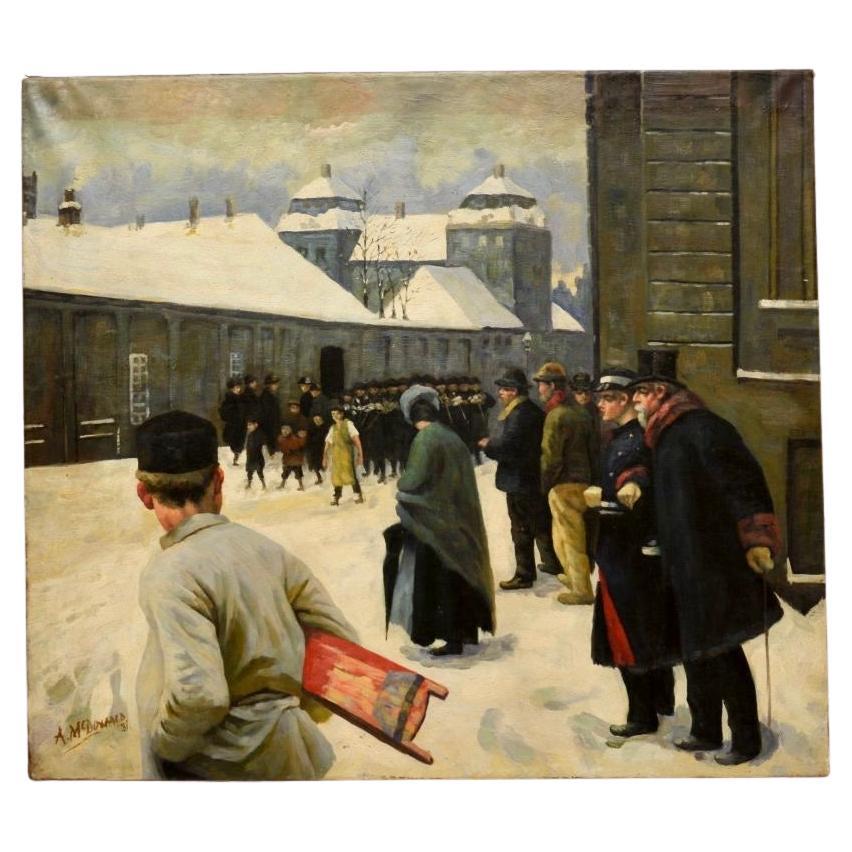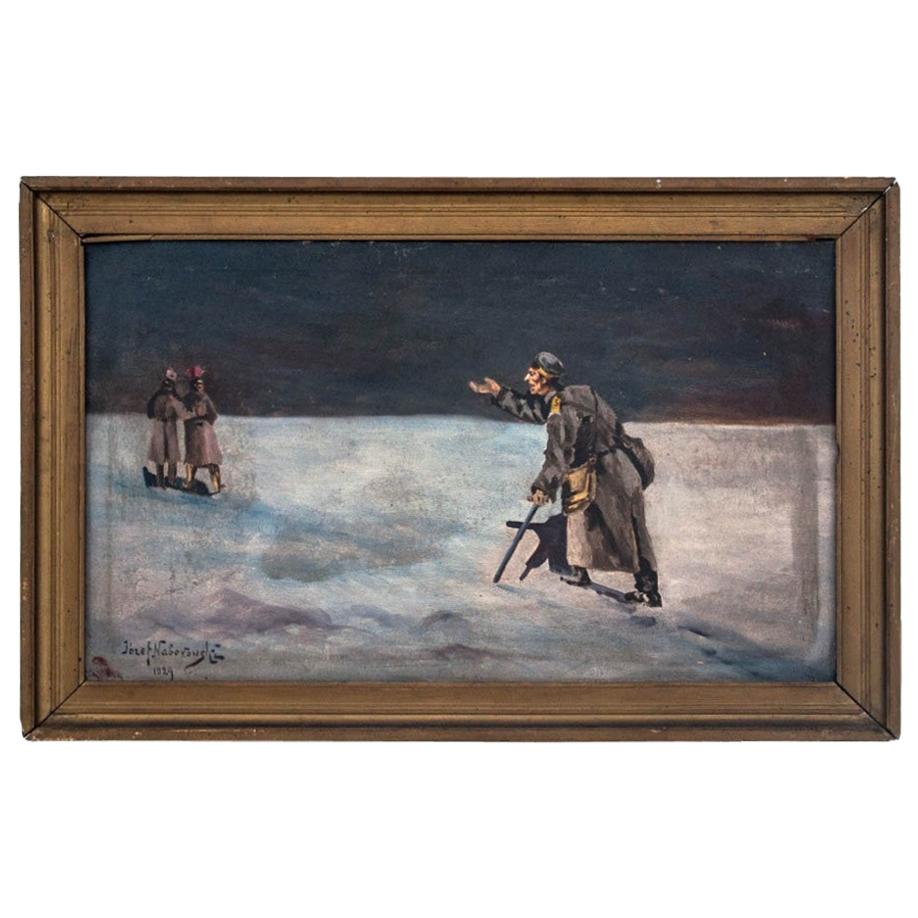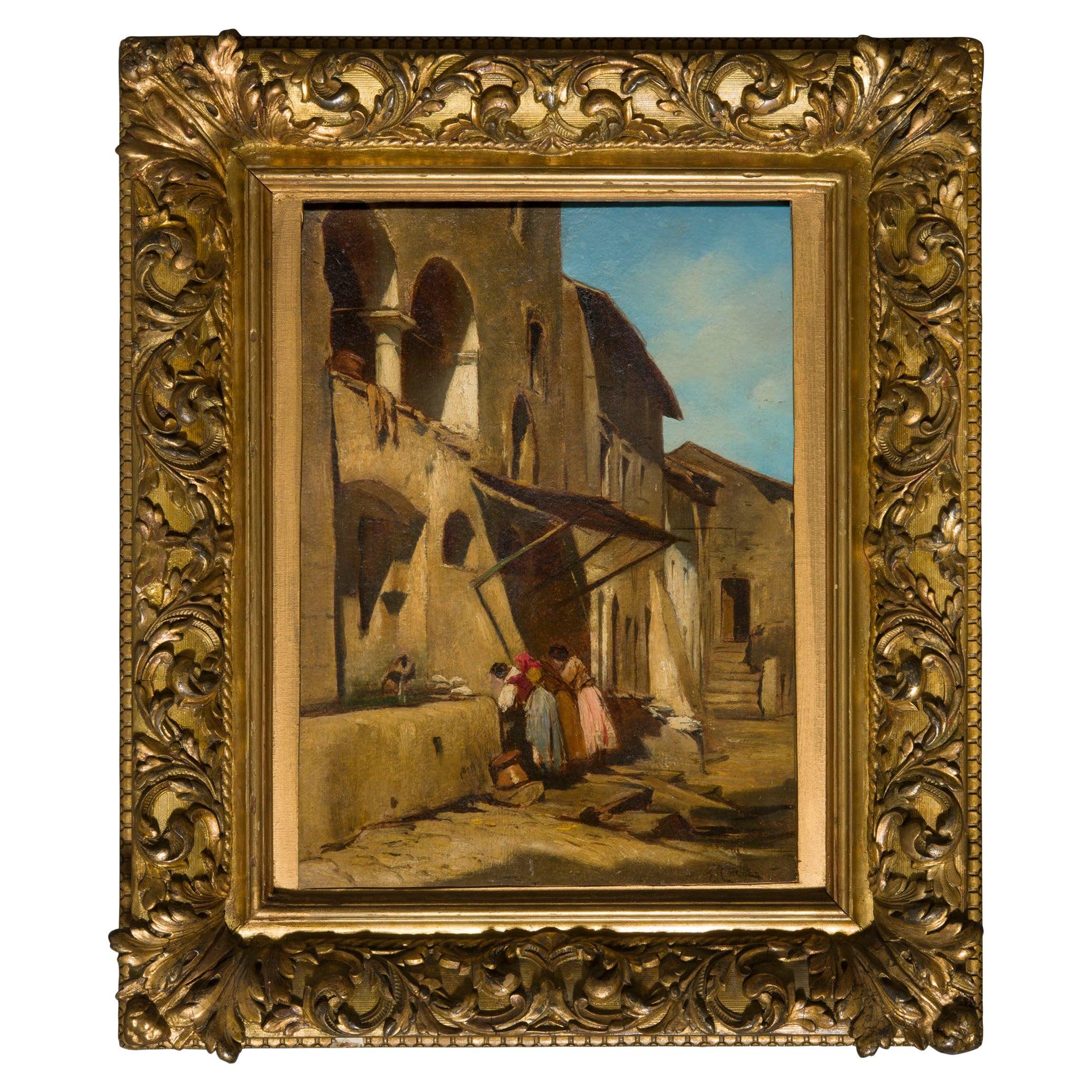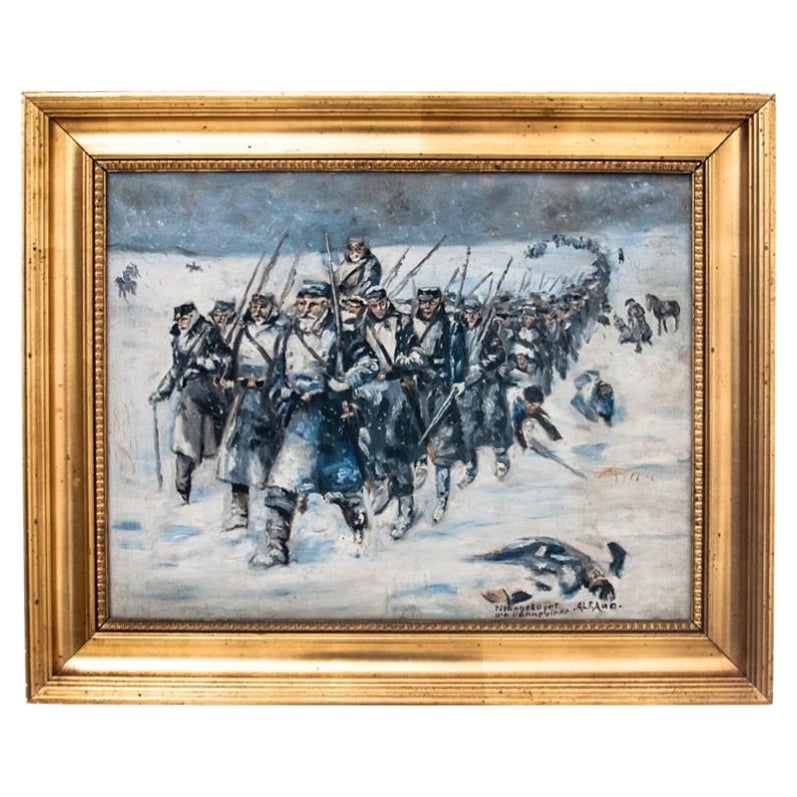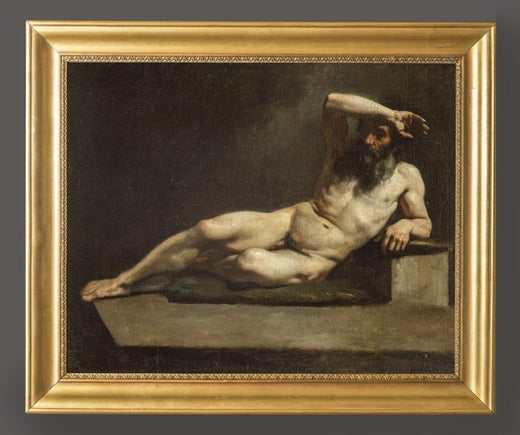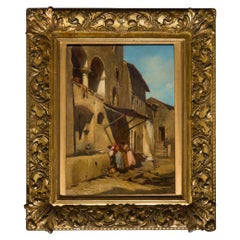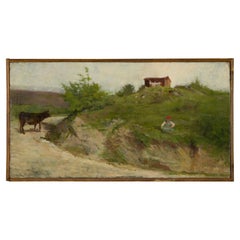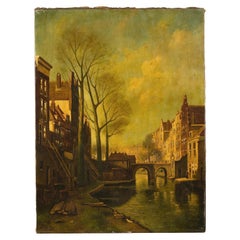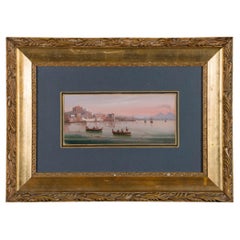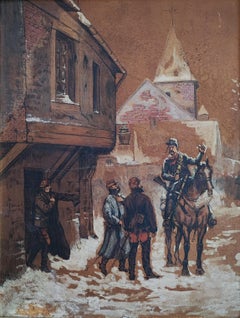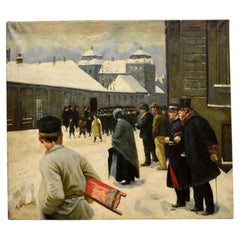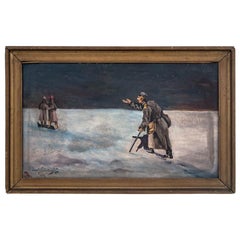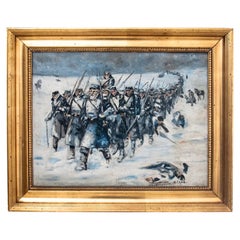Michele Cammarano19th Century Signed Italian Military Painting Michele Cammarano1880 ca.
1880 ca.
About the Item
- Creator:Michele Cammarano (1835 - 1920)
- Creation Year:1880 ca.
- Dimensions:Height: 16.15 in (41 cm)Width: 12.8 in (32.5 cm)Depth: 0.79 in (2 cm)
- Medium:
- Movement & Style:
- Period:
- Condition:
- Gallery Location:Roma, IT
- Reference Number:1stDibs: LU2883216562442
Michele Cammarano
Michele Cammarano, in which one seems to find again the same elderly model as in our painting more emaciated to allude to the rigors of being a hermit but very similar in physiognomy, enough to assume the man was probably a model frequently present in the atelier of the Neapolitan artist, the same that in the character of a beggar is included in the background in front of a door with a sign on which is written Painting studio. Trained in the course of the School of Posillipo and in the landscapes of Palizzi, from 1853, Cammarano decided to approach figure studies under the guidance of Giuseppe Mancinelli: a choice motivated by his desire to broaden his cultural horizons to include the themes of historic painting and figurative sources more consonant with the contemporary vision of reality, discovering as such in Caravaggio and lesser-known 17th-century painters, from Micco Spadaro to Aniello Falcone, unexpected testimonies of a vital and dramatic working-class life. During the 1860s, emerged paintings that better reflected this growing interest in social themes — Leisure and work (1863), Poor people’s resources (1867), Encouraging vice (1867) — treated with a style of notable formal liberty that caused worried critics to write “painting like that of a certain school beyond the Alps […] is placed in service of ideas humanitarian, socialist and democratic” together with these appeared inevitably the name of the “damned” Courbet. Cammarano had the opportunity to know, also personally, the talked-about French artist and his vigorously social painting on a trip that brought him to Paris in 1870, an occasion on which he was also enthusiastic about the Raft of the Medusa of Gericault, admired for the intonation and bold design, while in Courbet’s painting he appreciated “above all the nude, the frank interpretation of the flesh, fresh and colored, achieving the limpidness of light." Completely relevant observations for this painting which, in fact, reveals a French “patina” in the controlled balance between examples of baroque naturalism and the direct observation of reality, following a compositional process that Michele Biancale already identified in the works of Cammarano, “To be the equivalent of Courbet in Naples it was enough for him to revisit the substantial works of the 17th century."
- ShippingRetrieving quote...Shipping from: Roma, Italy
- Return Policy
More From This Seller
View AllLate 19th Century Old Masters Landscape Paintings
Canvas, Paper, Oil
Late 19th Century Italian School Landscape Paintings
Canvas, Oil
Late 19th Century Dutch School Landscape Paintings
Canvas, Oil
Mid-19th Century Italian School Landscape Paintings
Tempera, Paper
Mid-20th Century Italian School Landscape Paintings
Canvas, Pastel
1890s Italian School Landscape Paintings
Oil, Wood
You May Also Like
Early 20th Century Old Masters Landscape Paintings
Oil
Vintage 1930s British Paintings
Canvas
Vintage 1920s Polish Neoclassical Revival Paintings
Canvas, Wood
Vintage 1930s Scandinavian Other Paintings
Canvas
Antique 1880s Italian Paintings
Paint
Antique 19th Century Italian International Style Paintings
Canvas
